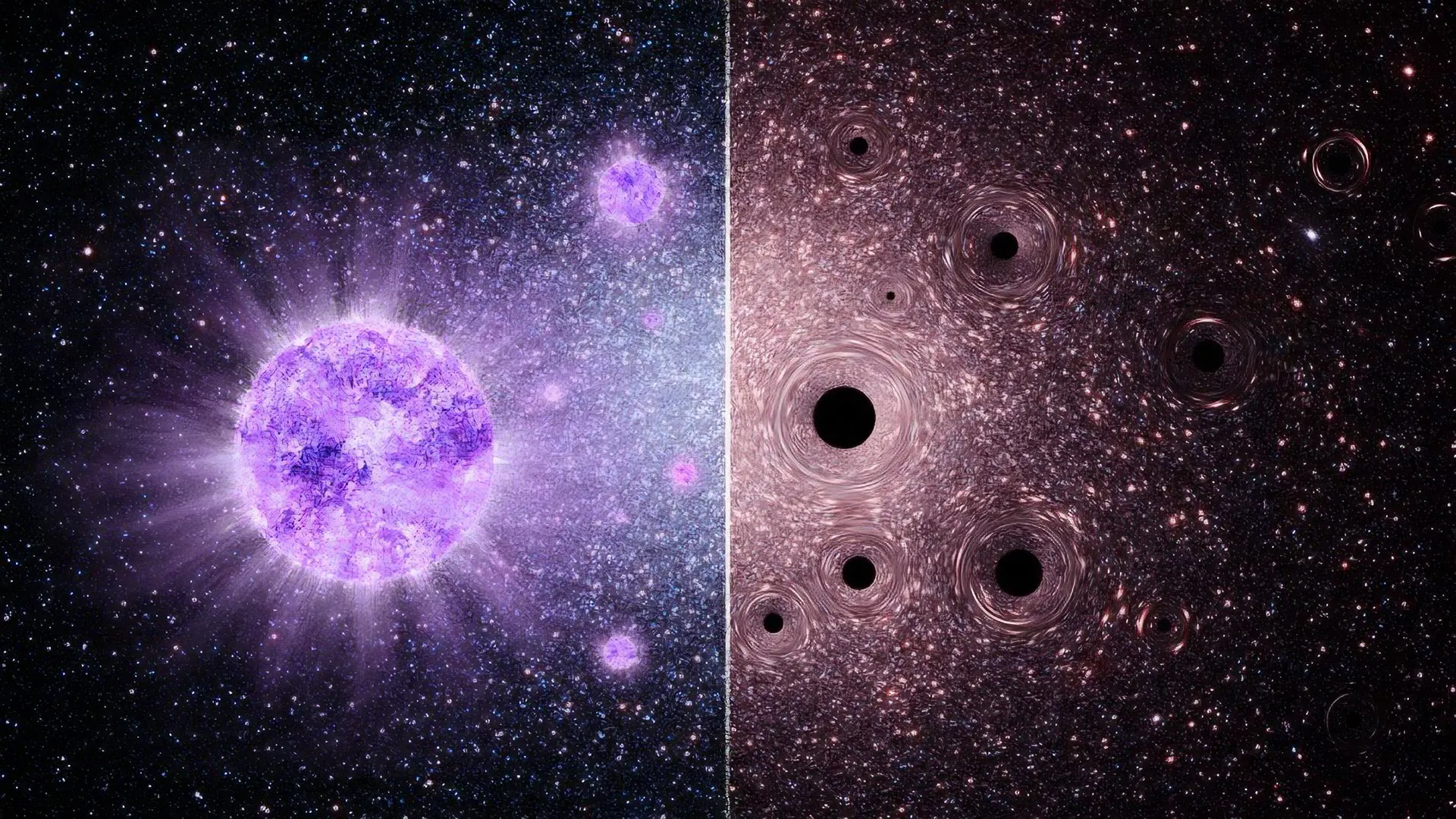PROTECT YOUR DNA WITH QUANTUM TECHNOLOGY
Orgo-Life the new way to the future Advertising by AdpathwayFor many years, scientists have believed that dark matter and dark energy make up most of the cosmos. But new research challenges that view, suggesting these mysterious components might not exist at all. Instead, the effects we attribute to them could arise naturally if the fundamental forces of the universe slowly weaken as it grows older.
The study, led by Rajendra Gupta, an Adjunct Professor in the Department of Physics at the University of Ottawa, proposes that gradual changes in the strength of nature's forces (such as gravity) over time and space could explain several puzzling cosmic behaviors. These include how galaxies rotate, evolve, and cluster, as well as how the universe expands.
Challenging Long-Held Assumptions
"The universe's forces actually get weaker on the average as it expands," Professor Gupta explains. "This weakening makes it look like there's a mysterious push making the universe expand faster (which is identified as dark energy). However, at galactic and galaxy-cluster scale, the variation of these forces over their gravitationally bound space results in extra gravity (which is considered due to dark matter). But those things might just be illusions, emergent from the evolving constants defining the strength of the forces."
He continues, "There are two very different phenomena needed to be explained by dark matter and dark energy: The first is at cosmological scale, that is, at a scale larger than 600 million light years assuming the universe is homogeneous and the same in all directions. The second is at astrophysical scale, that is, at smaller scale the universe is very lumpy and direction dependent. In the standard model, the two scenarios require different equations to explain observations using dark matter and dark energy. Ours is the only one that explains them with the same equation, and without needing dark matter or dark energy."
Gupta adds that the approach provides a single framework for explaining observations like galaxy rotation, clustering, and the bending of light around massive objects. "It's all just the result of the constants of nature varying as the universe ages and becomes lumpy," he says.
A New Model on the Galactic Scale
In earlier work, Professor Gupta questioned the existence of dark matter on a cosmic scale. His latest research extends that idea to smaller, astrophysical scales, examining how galaxies rotate.
In this model, a parameter known as α emerges when the coupling constants -- the quantities describing the strength of fundamental forces -- are allowed to evolve. This α term acts as an additional element in gravitational equations, reproducing the same effects traditionally explained by dark matter and dark energy.
At large scales, α is treated as constant (for example, using supernova data). Locally, within galaxies, α changes depending on how ordinary matter (black holes, stars, planets, and gas) is distributed. In regions rich in matter, the effect is smaller; in sparse regions, it grows stronger. As a result, the model naturally explains why stars in a galaxy's outer regions move faster than expected without invoking unseen dark matter halos.
Rethinking the Universe's Timeline
Gupta believes this approach could help resolve longstanding astronomical puzzles. "For years, we've struggled to explain how galaxies in the early universe formed so quickly and became so massive," he notes. "With our model, you don't need to assume any exotic particles or break the rules of physics. The timeline of the universe simply stretches out, almost doubling the universe's age, and making room for everything we observe."
By effectively lengthening the universe's developmental timeline, the model makes it easier to understand how enormous structures -- such as galaxies and black holes -- could have formed so soon after the Big Bang.
This theory could dramatically reshape our understanding of the cosmos. It even suggests that the decades-long search for dark matter particles, which has cost billions of dollars, might not be needed. Even if such exotic particles were discovered, Gupta argues, they would still only account for about six times the mass of ordinary matter.
"Sometimes, the simplest explanation is the best one. Maybe the Universe's biggest secrets are just tricks played by the evolving constants of nature," he concludes.
The research, titled "Testing CCC+TL Cosmology with Galaxy Rotation Curves," appears in the peer-reviewed journal Galaxies.


 5 hours ago
11
5 hours ago
11





















 English (US) ·
English (US) ·  French (CA) ·
French (CA) ·